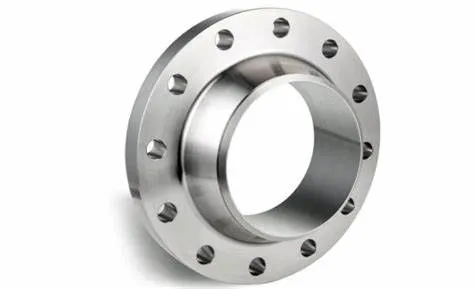-
Cangzhou Yulong Steel Co., Ltd.
-
Phone:
+86 13303177267 -
Email:
admin@ylsteelfittings.com
- English
- Arabic
- Italian
- Spanish
- Portuguese
- German
- kazakh
- Persian
- Greek
- French
- Russian
- Polish
- Thai
- Indonesian
- Vietnamese
- Zulu
- Korean
- Uzbek
- Hindi
- Serbian
- Malay
- Ukrainian
- Gujarati
- Haitian Creole
- hausa
- hawaiian
- Hebrew
- Miao
- Hungarian
- Icelandic
- igbo
- irish
- Japanese
- Javanese
- Kannada
- Khmer
- Rwandese
- Afrikaans
- Albanian
- Amharic
- Armenian
- Azerbaijani
- Basque
- Belarusian
- Bengali
- Bosnian
- Bulgarian
- Catalan
- Cebuano
- China
- China (Taiwan)
- Corsican
- Croatian
- Czech
- Danish
- Esperanto
- Estonian
- Finnish
- Frisian
- Galician
- Georgian
- Kurdish
- Kyrgyz
- Lao
- Latin
- Latvian
- Lithuanian
- Luxembourgish
- Macedonian
- Malgashi
- Malayalam
- Maltese
- Maori
- Marathi
- Mongolian
- Myanmar
- Nepali
- Norwegian
- Norwegian
- Occitan
- Pashto
- Dutch
- Punjabi
- Romanian
- Samoan
- Scottish Gaelic
- Sesotho
- Shona
- Sindhi
- Sinhala
- Slovak
- Slovenian
- Somali
- Sundanese
- Swahili
- Swedish
- Tagalog
- Tajik
- Tamil
- Tatar
- Telugu
- Turkish
- Turkmen
- Urdu
- Uighur
- Welsh
- Bantu
- Yiddish
- Yoruba

Aug . 14, 2024 18:55 Back to list
Exploring Various Types of Flanges and Fittings for Industrial Applications and Connections
Understanding Flanges and Fittings Essential Components in Piping Systems
Flanges and fittings are critical components in the construction and operation of piping systems across various industries, including oil and gas, water treatment, chemical processing, and manufacturing. Their primary function is to connect pipes, valves, pumps, and other equipment securely, ensuring the integrity and efficiency of fluid transport systems. This article delves into the significance, types, and applications of flanges and fittings, highlighting their essential roles in engineering and industrial applications.
What are Flanges?
Flanges are flat pieces of metal that serve as a connection point between two sections of piping. They come in various shapes, sizes, and materials, allowing them to accommodate different pressures, temperatures, and environmental conditions. Common flange materials include carbon steel, stainless steel, and plastic, each selected based on compatibility with the conveyed media and operational requirements.
Flanges are typically characterized by their dimensions, bolt hole pattern, and pressure rating, measured in pounds per square inch (psi). There are several types of flanges, including
1. Weld Neck Flanges Designed for high-pressure applications, these flanges have a long neck that allows for a smoother transition between the pipe and the flange. 2. Slip-On Flanges These are slipped over the pipe and welded in place, making installation easier. However, they are best suited for low-pressure applications.
3. Blind Flanges Used to seal the end of a piping system, these flanges do not have a bore and are vital for maintenance and inspection purposes.
5. Lap Joint Flanges Often used in conjunction with a stub end, these flanges allow for easy disassembly, making them suitable for applications requiring frequent maintenance.
What are Fittings?
flanges and fittings

Fittings are components used to connect sections of pipe, change the direction of flow, or adapt different pipe sizes. They vary in design, including elbows, tees, reducers, and couplings. Similar to flanges, fittings are made from various materials, including metal and plastic, depending on the specific application needs.
1. Elbows These fittings allow for the redirection of fluid flow, commonly at angles of 90 degrees or 45 degrees, facilitating efficient routing in confined spaces.
2. Tees Used to create a branch line from a main pipe, tees enable the distribution of fluid to multiple directions.
3. Reducers These fittings connect pipes of different diameters, allowing for a smooth transition and maintaining flow efficiency.
4. Couplings Used to connect two pipe ends, couplings can be either rigid or flexible, depending on the requirements of the piping system.
Applications and Importance
Flanges and fittings are ubiquitous in various sectors due to their versatility and reliability. In the oil and gas industry, they ensure safe transportation of hydrocarbons under high pressure. In water treatment facilities, they facilitate the movement of water through treatment processes, while in manufacturing, they support the integrity of production lines.
The importance of selecting the right flange and fitting cannot be overstated. Improper choices can lead to leaks, system failures, and catastrophic accidents. Hence, engineers pay close attention to the specifications of these components, considering factors such as pressure, temperature, the nature of the fluids, and environmental conditions.
Conclusion
Flanges and fittings play an indispensable role in the functionality and safety of piping systems. By understanding their types, applications, and significance, engineers and industry professionals can ensure that they make informed decisions when designing and maintaining efficient fluid transport systems. Whether in construction, maintenance, or system upgrades, the choice of flanges and fittings is crucial for operational success and safety.
Latest news
-
ANSI 150P SS304 SO FLANGE
NewsFeb.14,2025
-
ASTM A333GR6 STEEL PIPE
NewsJan.20,2025
-
ANSI B16.5 WELDING NECK FLANGE
NewsJan.15,2026
-
ANSI B16.5 SLIP-ON FLANGE
NewsApr.19,2024
-
SABS 1123 FLANGE
NewsJan.15,2025
-
DIN86044 PLATE FLANGE
NewsApr.19,2024
-
DIN2527 BLIND FLANGE
NewsApr.12,2024
-
JIS B2311 Butt-Welding Fittings LR/SR 45°/90° /180°Seamless/Weld
NewsApr.23,2024











